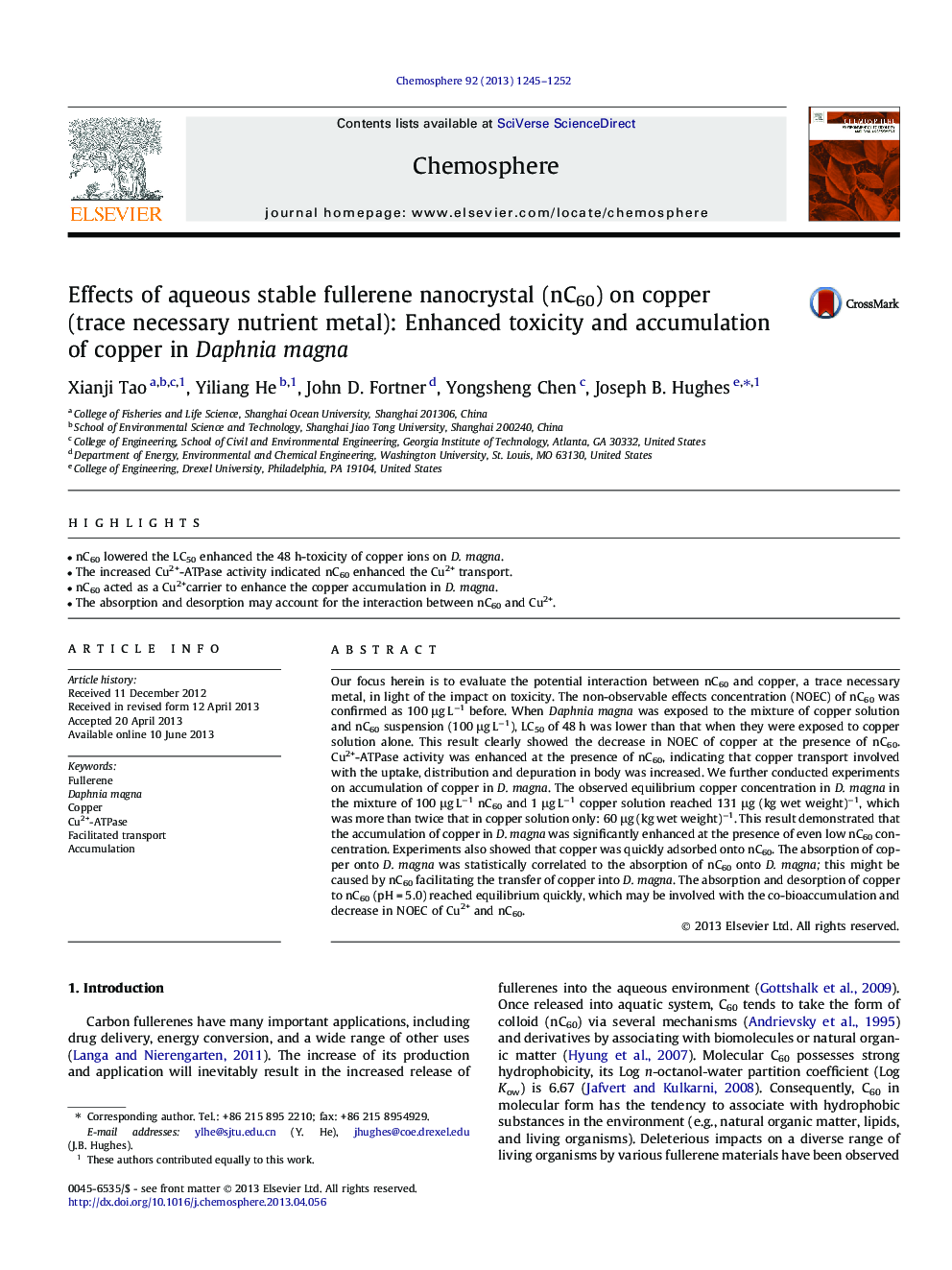| کد مقاله | کد نشریه | سال انتشار | مقاله انگلیسی | نسخه تمام متن |
|---|---|---|---|---|
| 6310648 | 1307474 | 2013 | 8 صفحه PDF | دانلود رایگان |

- nC60 lowered the LC50 enhanced the 48Â h-toxicity of copper ions on D. magna.
- The increased Cu2+-ATPase activity indicated nC60 enhanced the Cu2+ transport.
- nC60 acted as a Cu2+carrier to enhance the copper accumulation in D. magna.
- The absorption and desorption may account for the interaction between nC60 and Cu2+.
Our focus herein is to evaluate the potential interaction between nC60 and copper, a trace necessary metal, in light of the impact on toxicity. The non-observable effects concentration (NOEC) of nC60 was confirmed as 100 μg Lâ1 before. When Daphnia magna was exposed to the mixture of copper solution and nC60 suspension (100 μg Lâ1), LC50 of 48 h was lower than that when they were exposed to copper solution alone. This result clearly showed the decrease in NOEC of copper at the presence of nC60. Cu2+-ATPase activity was enhanced at the presence of nC60, indicating that copper transport involved with the uptake, distribution and depuration in body was increased. We further conducted experiments on accumulation of copper in D. magna. The observed equilibrium copper concentration in D. magna in the mixture of 100 μg Lâ1 nC60 and 1 μg Lâ1 copper solution reached 131 μg (kg wet weight)â1, which was more than twice that in copper solution only: 60 μg (kg wet weight)â1. This result demonstrated that the accumulation of copper in D. magna was significantly enhanced at the presence of even low nC60 concentration. Experiments also showed that copper was quickly adsorbed onto nC60. The absorption of copper onto D. magna was statistically correlated to the absorption of nC60 onto D. magna; this might be caused by nC60 facilitating the transfer of copper into D. magna. The absorption and desorption of copper to nC60 (pH = 5.0) reached equilibrium quickly, which may be involved with the co-bioaccumulation and decrease in NOEC of Cu2+ and nC60.
Journal: Chemosphere - Volume 92, Issue 9, August 2013, Pages 1245-1252